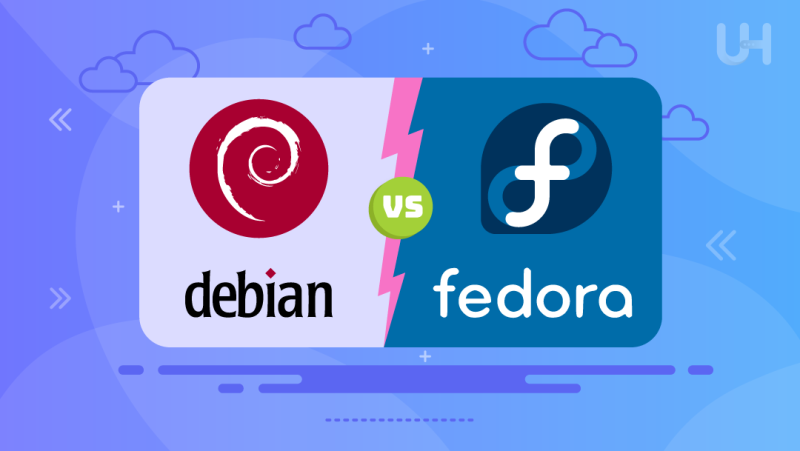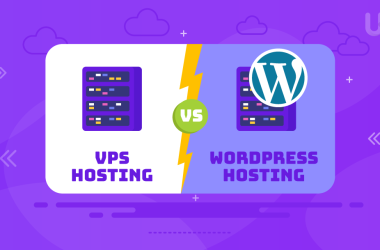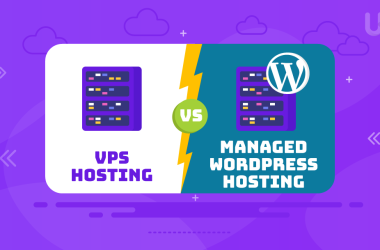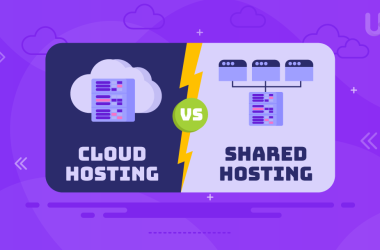Linux has grown into a diverse ecosystem of distributions, each designed with unique philosophies and use cases in mind. Among the hundreds of options available, two names always stand out Debian and Fedora. These distributions are not just popular; they represent two very different approaches to building and maintaining an operating system.
On one side, Debian has earned a reputation as a rock-solid, stability-first distribution, often considered the backbone of many other Linux projects, including Ubuntu. On the other, Fedora is known for being bold and innovative, frequently introducing cutting-edge technologies years before they reach mainstream Linux environments.
Key Takeaways
- Debian is ideal for servers and mission-critical systems where reliability matters more than the latest features.
- Fedora delivers cutting-edge innovation and perfect for developers and enthusiasts who want the newest Linux tools and technologies first.
- Debian provides the largest repository of tested software, while Fedora emphasizes modern, fast-evolving packages.
- Desktop experience is smoother on Fedora, thanks to its default GNOME environment and polished interface, compared to Debian’s minimalist start.
- Debian’s long-term releases reduce update stress, while Fedora’s shorter cycles keep systems fresh but require frequent upgrades.
- Debian suits enterprises, lightweight systems, and server admins, while Fedora shines for innovation-driven developers and workstation users.
In this article, we will outline the differences between Debian vs Fedora, going deep into their key features, advantages, and disadvantages. The end of this journey will make you better informed about choosing between Debian and Fedora, whether for desktop, server management, or development purposes.
What is Debian?
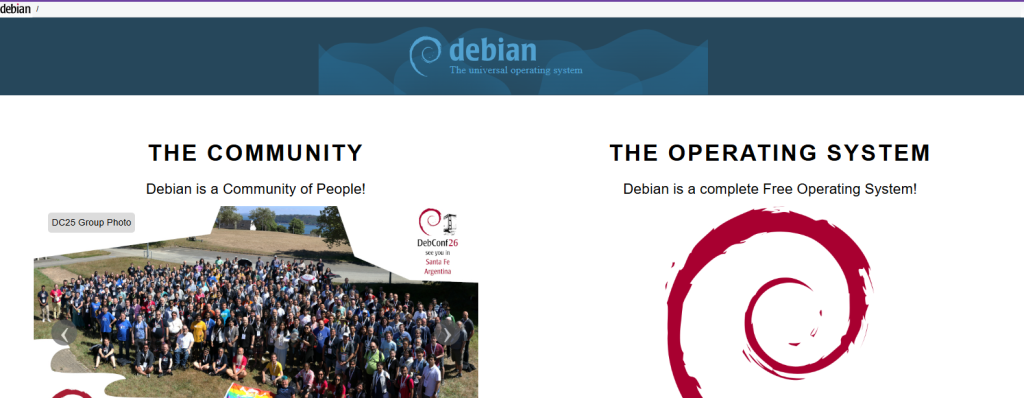
Debian is one of the oldest and most respected Linux distributions. The distro has gained a reputation for ensuring the system software is free and has a stable release. Many other distributions are based upon it, including Ubuntu, arguably one of the most popular Linux distros in the world. This distribution philosophy focuses strongly on ensuring a solid and secure basis for any installation, making it a great option to go with, both for entry-level users and power users alike. Read also Ubuntu vs Debian: Which Linux Distro Is Right For You?
Overall, Debian makes three branches available to the end user: “Stable,” “Testing,” and “Unstable.” The stable branch holds an extremely high level of dependability, with production usage in mind, since it has a rock-solid nature. This, however, does not include the most recent particular software versions because packages pass extreme testing in the Stable branch. The Testing and Unstable branches are available for users willing and able to use newer software, but these might not be as stable.
Key Features
- Stability: The Debian Stable release enjoys an excellent reputation for reliability. It is widely used and regular in mission-critical running infrastructures.
- Vast Package Repository: It is heavily developed and maintained by Debian, one of the major software repositories, holding over 50,000 packages.
- APT Package Management System: Debian’s Advanced Package Tool (APT) simplifies software installation and maintenance.
- Security Focus: Debian offers security updates for the stable branch, ensuring a secure system.
- Long-Term Support: Debian offers LTS (Long-Term Support), ensuring packages and security updates for up to five years.
What is Fedora?
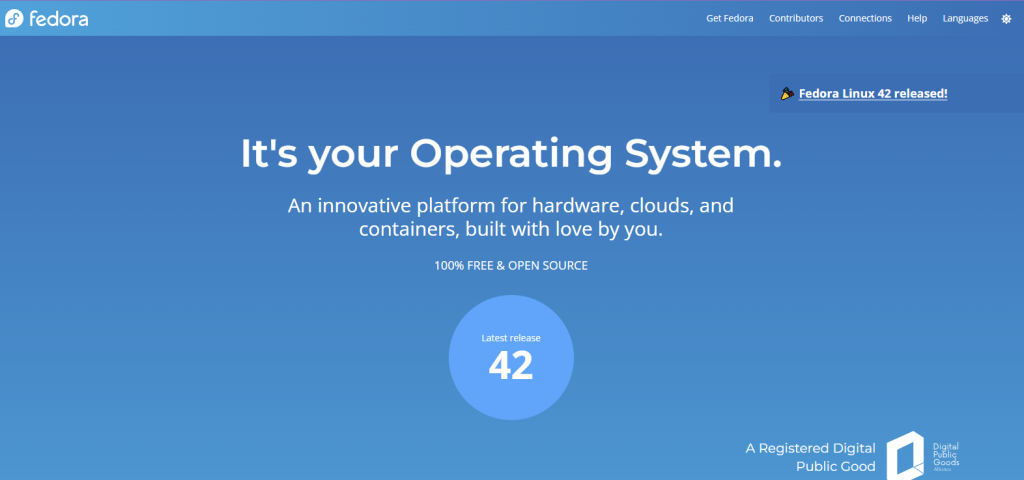
Fedora is a Linux distribution developed by the Fedora Project and sponsored by Red Hat. Fedora is always on the leading edge of Linux technology, but it doesn’t forget what developers, system administrators, and end users want from their advanced operating systems. Unlike Debian, which has always tried to balance innovation with rock-solid stability, Fedora focuses on giving end users the newest features, latest technologies, and updates. Fedora is what the future of Linux is going to look like, while new editions steadily release, bringing along new software. Learn also Fedora vs Ubuntu – Which Distro is Right For You?
This makes Fedora ideal for working with the most up-to-date and greatest open-source software. Fedora is also the upstream source of Red Hat Enterprise Linux, a testbed of technologies later adopted onto RHEL. Fedora is community-driven and provides an adaptable foundation for systems ranging from desktop to fully managed server environments.
Key Features
- Cutting-Edge Technology: Fedora incorporates each release’s newest Linux features and software.
- Frequent Releases: A new Fedora version is released approximately every six months.
- DNF Package Management: Fedora uses DNF (Dandified YUM), a modern package management tool that simplifies software installation.
- Strong Community Support: Fedora has a very active community and is supported by Red Hat.
- Fedora Spins: Fedora has different Spins or versions of Fedora that might appeal to a specific topic for use or target audience, such as Fedora KDE, Fedora LXDE, and so on.
Power Your Distribution with Linux VPS!
Looking for the perfect environment to run Debian or Fedora? Whether you’re seeking the stability of Debian or the cutting-edge features of Fedora, you need a reliable Linux VPS from Ultahost to maximize your Linux experience.
Debian vs Fedora: A Comparative Analysis
Having touched upon the bare essentials of both Debian vs Fedora, it is now fitting to examine the side-by-side comparison. Just as their names suggest, each of these distributions targets different needs. Thus, the choice will depend greatly on your specific needs, technical experience, and long-term goals.
| Feature | Debian | Fedora |
| Stability | Highly stable (especially in the Stable branch) | Less stable due to cutting-edge technologies |
| Release Cycle | Long-term (every 2-3 years) | Frequent (every 6 months) |
| Package Management | APT (Advanced Package Tool) | DNF (Dandified YUM) |
| Software Versions | Typically older, but highly tested | Latest software available |
| Target Audience | Users who need stability and long-term support | Developers and users who want the latest tools |
| Security | Strong security focus with long-term support | New security features are quickly implemented |
| Customization | Extremely customizable, wide package repository | Customizable with additional Fedora Spins |
| Community Support | Strong, long-standing community | Large and vibrant, with Red Hat’s backing |
Pros and Cons at a Glance
Debian
PROS
- Extremely stable and reliable – trusted for servers worldwide.
- Huge repository of over 59,000 packages.
- Lightweight and customizable for older hardware.
- Strong community support and extensive documentation.
- Long release cycles ensure consistent environments.
CONS
- Software versions are often outdated compared to other distros.
- Initial setup can feel complex for beginners.
- Desktop experience less polished by default.
- Fewer cutting-edge features out of the box.
- Long update cycles may delay access to new technologies.
Fedora
PROS
- Always up to date with the latest Linux kernel and technologies.
- Sleek and modern GNOME desktop by default.
- Strong backing from Red Hat and enterprise-level innovation.
- Great for developers who need the newest tools.
- Excellent hardware support for modern devices.
CONS
- Shorter release cycles require more frequent upgrades.
- Heavier system requirements compared to Debian.
- May feel less stable due to bleeding-edge updates.
- Smaller software repository compared to Debian.
- Learning curve for users who prefer stability over new features.
Use Cases: Which One Should You Choose?
Choosing between Debian and Fedora isn’t just about technical specs it’s about what you want from your Linux system. Both distributions are powerful, but they shine in different areas. Here’s a breakdown of where each fits best:
Debian: Best for Stability and Long-Term Use
- Servers and Enterprises: Debian’s rock-solid stability makes it a top choice for web servers, database systems, and corporate environments. It powers a large portion of internet infrastructure because once set up, it requires minimal intervention.
- Beginner-Friendly with Flexibility: While the installation may seem a bit advanced, Debian allows you to pick from multiple desktop environments, making it adaptable for personal laptops or old PCs.
- Educational Institutions: Universities and research labs often rely on Debian because of its predictable release cycle and huge package repository.
- Resource-Constrained Systems: Debian with XFCE or LXDE can run smoothly on older machines, extending their usability.
Fedora: Best for Innovation and Latest Features
- Developers and Programmers: Fedora’s cutting-edge packages and strong support for containerization tools (like Podman and Docker) make it ideal for software developers.
- Tech Enthusiasts: If you want to test the latest Linux technologies, Fedora often integrates them first, such as newer kernels and Wayland improvements.
- Workstations for Productivity: Fedora Workstation provides a polished GNOME experience that’s streamlined for professionals who want a modern, clean, and ready-to-go system.
- Security-Focused Users: Fedora emphasizes open-source purity and frequently ships with the latest security enhancements, making it suitable for users who want a balance of innovation and security.
Fedora vs Debian: Choosing the Right Distribution

Where Debian vs Fedora differ greatly, the main thing to consider is your purpose with the distribution. Each has a lot of advantages in slightly different scenarios:
- Server User: If you are running a server, Debian is an excellent first choice to host web services, databases, or other critical systems due to its stability. On the other hand, Fedora is better for experimental server environments where the latest features need to be leveraged.
- Cloud Computing: Fedora uses Docker for containerization, including Kubernetes, among other technologies. This means it outpaces Debian in cloud computing environments coupled with Red Hat’s cloud solutions. Still, Debian remains very usable because of its simplicity and efficiency in resource usage.
- Desktop Usage: Fedora’s desktop usage is bleeding-edge, with the latest software and technologies included; therefore, it is more for developers. Debian’s desktop usage is more for users who would prefer stability to the latest features in the OS.
- Containerization: The containerization of Fedora is strong in featuring container tools integration, thus serving as a good fit for developers working in a containerized environment. Debian is a good alternative but focuses more on general-purpose stability.
Tips for Choosing the Right Distribution
Still confused between the two? Here are a few tips to help narrow it down:
- Consider your hardware: Debian works well even on older or low-powered machines, while Fedora is better suited for modern hardware that can keep up with frequent updates.
- Think about your role: If you’re running servers or enterprise applications, Debian is a safe bet. If you’re a developer or Linux enthusiast, Fedora’s fresh features may be more attractive.
- Look at support needs: Debian’s massive community ensures plenty of troubleshooting help. Fedora’s corporate backing and documentation provide reliable professional-grade support.
- Decide on stability vs. freshness: Debian users enjoy years of rock-solid reliability, whereas Fedora users embrace rapid innovation with shorter support cycles.
- Test before committing: Both Debian and Fedora offer Live USB versions, letting you try them risk-free before making a final choice.
Conclusion
Deciding between Debian or Fedora depends on your specific needs and your inclination towards the distribution’s use. Debian is a sure choice for stability, long-term support, or a reliable system. It is very good for servers and production environments. On the other hand, Fedora would be ideal for users seeking to have access to bleeding-edge technology and frequent updates needed, targeting developers and users working in dynamic, development-centered environments. The bottom line is that either could be your choice, but rest assured that Debian or Fedora will be robust, flexible Linux distributions with large communities supporting them.
For users who prioritize stability and security in their server environments, CloudLinux Server from UltaHost provides the perfect solution. Whether you choose Debian or Fedora, CloudLinux ensures an optimized hosting experience.
FAQ
Which is better for beginners, Debian or Fedora?
Debian is more beginner-friendly due to its stability; Fedora suits users seeking cutting-edge technology.
Is Fedora more secure than Debian?
Fedora adopts new security features faster, while Debian provides long-term, stable security updates.
Which has better software support, Debian or Fedora?
Debian has a larger package repository, but Fedora offers the latest software versions.
Can Debian or Fedora be used for servers?
Yes, Debian is preferred for stability, while Fedora is ideal for experimental servers.
Which is better for developers, Debian or Fedora?
Fedora is great for developers needing the latest tools; Debian excels in stable development environments.
Do Debian and Fedora support containerization?
Yes, but Fedora integrates more deeply with Docker and Kubernetes.
How often are updates released for Debian and Fedora?
Debian has a slower release cycle, with stable releases every 2-3 years, while Fedora releases updates more frequently, approximately every six months.





